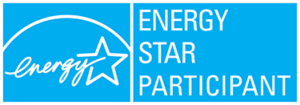Coleman At a Glance
What’s Wrong With Your Coleman Air Conditioner?
Bad smells when the unit is running?
Odd or Unusual Sounds
Temperature fluctuations?
Not enough cooling output?
Poor air flow?
Water dripping from the unit?
Fan won’t run?
Compressor stops working?
Whole unit won’t run?
Coleman Air Conditioner Error Codes
Outdoor Faults
| Display Text | Description |
|---|---|
| HPS- OPEN | High-pressure switch fault (not in lockout yet |
| HPS SOFTLOCKOUT - NORMAL | System in high-pressure switch lockout (last mode of operation was normal compressor |
| HPS HARDLOCKOUT - NORMAL | System in high-pressure switch lockout (last mode of operation was normal compressor |
| LOW VOLTAGE - BELOW 19VAC | Low Voltage (<19 VAC) |
| COMMUNICATIONSLOST - INVERTER DRIVE | Inverter Control Communications Fault |
| COMMUNICATIONSLOST - SYSTEM MASTER | JCI RS-485 Communications Lost |
| INVERTER CONFIGURATION ERROR | Repair part tonnage selection does not match the stored value programmed in the JCI factory |
| INVERTER MODELINSTALLATIONERROR - HARD LOCKOUT | Inverter Model Number installed does not match the stored tonnage in EEPROM |
| OUTDOOR AMBIENTSENSOR - SHORT - SOFT LOCKOUT | Outdoor ambient sensor failure (short) |
| OUTDOOR AMBIENTSENSOR - SHORT - HARD LOCKOUT | Outdoor ambient sensor failure (short |
| OUTDOOR AMBIENTSENSOR - OPEN - SOFT LOCKOUT | Outdoor ambient sensor failure (open) |
| OUTDOOR AMBIENTSENSOR - OPEN - HARD LOCKOUT | Outdoor ambient sensor failure (open) |
| COIL TEMPSENSOR - SHORT | Coil sensor failure (short) not in lockout yet |
| COIL TEMPSENSOR - SHORT - SOFT LOCKOUT | Coil sensor failure (short) |
| COIL TEMPSENSOR - SHORT - HARD LOCKOUT | Coil sensor failure (short) |
| COIL TEMPSENSOR - OPEN | Coil sensor failure (open) not in lockout yet |
| COIL TEMPSENSOR - OPEN - SOFT LOCKOUT | Coil sensor failure (open) |
| COIL TEMPSENSOR - OPEN - HARD LOCKOUT | Coil sensor failure (open) |
| LIQUID TEMPSENSOR - SHORT | Liquid line temperature sensor failure (short) not in lockout yet |
| LIQUID TEMPSENSOR - SHORT - SOFT LOCKOUT | Liquid line temperature sensor failure (short) |
| LIQUID TEMPSENSOR - OPEN | Liquid line temperature sensor failure (open) not in lockout yet |
| LIQUID TEMPSENSOR - OPEN - SOFT LOCKOUT | Liquid line temperature sensor failure (open) |
| DISCHARGE TEMPSENSOR - SHORT | Discharge temperature sensor failure (short) |
| DISCHARGE TEMPSENSOR - OPEN | Discharge temperature sensor failure (open) not in lockout yet |
| DISCHARGE TEMPSENSOR - OPEN - SOFT LOCKOUT | Discharge temperature sensor failure (open) |
| SUCTION TEMPSENSOR - SHORT | Suction temperature sensor failure (short) not in lockout yet |
| SUCTION TEMPSENSOR - SHORT - SOFT LOCKOUT | Suction temperature sensor failure (short) |
| SUCTION TEMPSENSOR - OPEN | Suction temperature sensor failure (open) not in lockout yet |
| SUCTION TEMPSENSOR - OPEN - SOFT LOCKOUT | Suction temperature sensor failure (open) |
| DISCHARGEPRESSURE SENSOR - LOW VOLTAGE | Discharge pressure sensor failure (low voltage) not in lockout yet |
| DISCHARGEPRESSURE SENSOR - LOW VOLTAGE - SOFT LOCKOUT | Discharge pressure sensor failure (low voltage) |
| DISCHARGEPRESSURE SENSOR - HIGH VOLTAGE | Discharge pressure sensor failure (high voltage) not in lockout yet |
| DISCHARGEPRESSURE SENSOR - HIGH VOLTAGE - SOFT LOCKOUT | Discharge pressure sensor failure (high voltage) |
| SUCTION PRESSURESENSOR - LOW VOLTAGE - SOFT LOCKOUT | Suction pressure sensor failure (low voltage) |
| SUCTION PRESSURESENSOR - HIGH VOLTAGE - SOFT LOCKOUT | Suction pressure sensor failure (high voltage) |
| HIGH DISCHARGE TEMP | High discharge temperature (not in lockout yet) |
| HIGH DISCHARGETEMP - SOFT LOCKOUT | High discharge temperature |
| HIGH DISCHARGETEMP - HARD LOCKOUT | High discharge temperature |
| LOW SUCTION PRESSURE | Low suction pressure (not in lockout yet |
| LOW SUCTIONPRESSURE - SOFT LOCKOUT | Low suction pressure |
| LOW SUCTIONPRESSURE - HARD LOCKOUT | Low suction pressure |
Inverter Faults
| LED | Blink Codes | Display Text | Description |
|---|---|---|---|
| LED 604/LED2 | 1 or 3 | COMPRESSORPHASE OVER CURRENT - INVERTER DRIVE | C+B6:H16 Compressor Phase Over Current |
| LED 603 / LED3 | 4 | COMPRESSORPHASE OVER CURRENT - INVERTER DRIVE | C+B6:H16 Compressor Phase Over Current |
| LED604 / LED2 | 16 | COMPRESSOR PHASECURRENT FOLDBACK - INVERTER DRIVE | Compressor Phase Current Foldback Timeout |
| LED604 / LED2 | 11 | AC INPUT OVERCURRENT - INVERTER DRIVE | AC Input Over Current |
| LED 603 / LED3 | 5 | AC INPUT OVERCURRENT - INVERTER DRIVE | AC Input Current Sampling Fault |
| LED604 / LED2 | 7 | DC BUS OVERVOLTAGE - INVERTER DRIVE | DC Bus Over Voltage |
| LED604 / LED2 | 8 | DC BUS UNDERVOLTAGE - INVERTER DRIVE | DC Bus Under Voltage |
| LED604 / LED2 | 10 | AC INPUT OVERVOLTAGE - INVERTER DRIVE | AC Input Over Voltage |
| LED604 / LED2 | 9 | AC INPUT UNDERVOLTAGE - INVERTER DRIVE | AC Input Under Voltage |
| LED604 / LED2 | 4 | POWER MODULEOVER TEMP - INVERTER DRIVE | Power Module Over Temp |
| LED604 / LED2 | 5 | PFC-IGBT OVER TEMP - INVERTER DRIVE | PFC-IGBT Over Temp |
| LED604 / LED2 | 2 | LOST ROTOR POSITION - INVERTER DRIVE | Lost Rotor Position |
| LED 603 / LED3 | 14 | COMPRESSOR PHASECURRENT IMBALANCE - INVERTER DRIVE | Compressor Phase Current Imbalance |
| LED 603 / LED3 | 13 | MICROELECTRONICFAULT - INVERTER DRIVE | Microelectronic Faul |
| 12 | MICROELECTRONICFAULT - INVERTER DRIVE | EEPROM Fault | |
| LED 603/LED3 | 2 | POWER MODULE TEMPLOW / SENSOR OPEN - INVERTER DRIVE | Power Module Temp Low or Sensor Open Fault |
| LED604 / LED2 | 17 | N/A | DC Bus Under Voltage |
| LED 603 / LED3 | 15 | AC INPUT CURRENTFOLDBACK - INVERTER DRIVE | AC Input Current Foldback Timeout |
| LED 603 / LED3 | 11 | MODBUS COMM LOST - INVERTER DRIVE | Modbus Communication Lost |
| LED604 / LED2 | 18 | POWER MODULE HIGHTEMP - INVERTER DRIVE | Power Module Temp High |
| LED604 / LED2 | 19 | PFC-IGBT HIGH TEMP - INVERTER DRIVE | PFC-IGBT High Temp |
| LED 603 | 9 | PFC MCU /DSP COMM ERROR - INVERTER DRIVE | PFC MCU and DSP Communication Lost |
| LED 603 | 8 | COM MCU / DSPCOMM ERROR - INVERTER DRIVE | COM MCU and DSP Communication Lost |
| LED 603 | 1 | PFC-IGBT LOW TEMP /SENSOR OPEN - INVERTER DRIVE | PFC-IGBT Temp Low or Sensor Open Fault |
| LED604 / LED2 | 21 | POWER MODULETEMP FOLDBACK - INVERTER DRIVE | Power Module Temp. Foldback Timeout |
| LED 604 / LED2 | 22 | COMPRESSOR MODELCONFIGURATION ERROR - INVERTER DRIVE | Compressor Model Configuration Error |
| LED 604 / LED2 | 23 | HPS CONFIGURATIONERROR - INVERTER DRIVE | High Pressure Sensor Type Configuration Error |
| LED 603 / LED3 | 3 | DLT CONFIGURATIONERROR - INVERTER DRIVE | DLT Low Temp or Open |
| LED 603 / LED3 | 6 | N/A | AC Input Voltage Sampling Fault |
| LED 603 / LED3 | 7 | N/A | DC BUS Voltage Sampling Fault |
| LED 603 / LED3 | 17 | N/A | Auto Configuration Communication Fault Timeout |
| LED 2 | 27 | N/A | Compressor AA5 Phase Over Current (Intermediate |
| LED 2 | 26 | N/A | Board Temp High |
Coleman Air Conditioner Repair Costs
When to Get a Technician for Coleman A/C Repairs
- Any problems involving critical components like the compressor or coil
- Electrical, wiring, and voltage problems
- Poor cooling and output issues that are unrelated to the thermostat
- Frequent fuse blows or circuit breaker trips
- Refrigerant leaks
- Water leaks
- Erratic and unpredictable operation
- Burning smells
- A hot or worn power cord
- Loud and strange sounds
Who to Call For Coleman Air Conditioner Repairs
Coleman’s Warranty Coverage
- Lifetime limited warranty for the compressor (Echelon models and LX CC17)
- 10-year limited warranty for the compressor (all other LX models)
- 10-year limited parts warranty
- 90-day labour limited warranty
How to Replace Your Coleman Air Filter
- Turn off power to the unit
- Locate the filter: check in the return air duct or on the indoor unit
- Remove the grille from the return air duct, or remove the access panel from the indoor unit
- Slide out the old filter
- Clean the old filter or get a new one*
- Slide the clean or new filter into place using the arrows for guidance
- Replace the grille or access panel
- Turn the power back on





